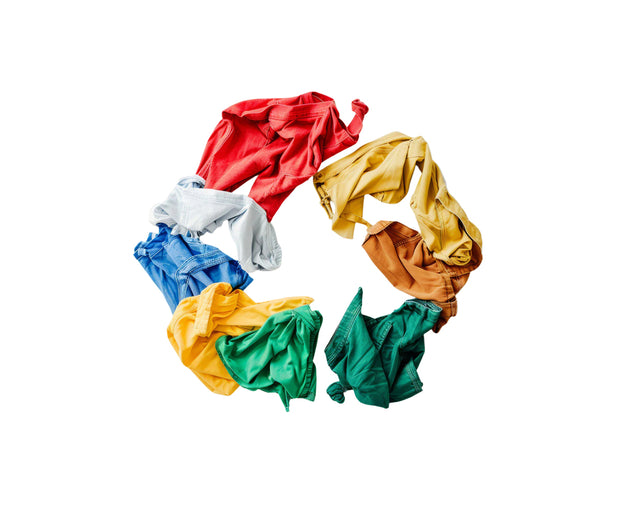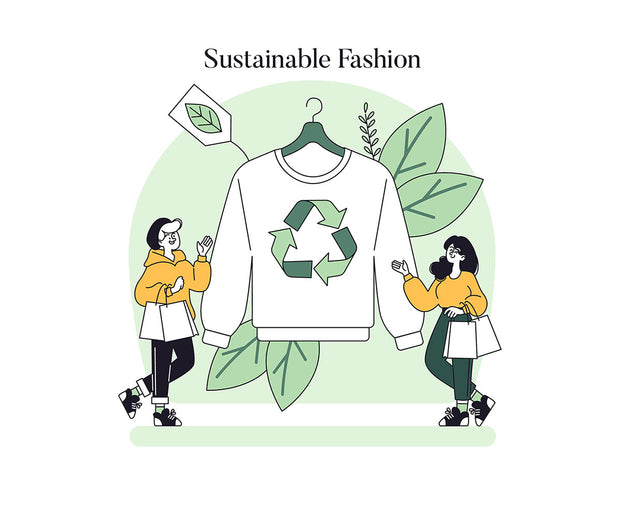A new era of conscious style with sustainable eco-fashion
- , by Someone You Know
- 2 min reading time
Sustainable eco-fashion is more than a trend—it’s a movement reshaping how we produce, consume, and think about clothing. With the fashion industry being a major contributor to pollution and waste, more brands and consumers are shifting towards ethical alternatives. This blog explores the key elements of sustainable fashion, including eco-friendly materials, ethical production, minimal waste, and slow fashion. Discover how organic cotton, recycled fabrics, and upcycling can help reduce environmental impact while promoting quality and durability. Join the movement towards conscious fashion—because looking good should never come at the cost of the planet.

The environmental and social impact of fashion
The traditional fashion industry has long been associated with overproduction, exploitative labor practices, and environmental degradation. Fast fashion, in particular, thrives on cheap materials and rapid production cycles, leading to excessive waste and pollution. Sustainable eco-fashion seeks to counteract these issues by prioritising eco-friendly materials, ethical production methods, and mindful consumption habits.
Key elements of sustainable eco-fashion
1. Sustainable materials and the fabric of change
Sustainable fashion begins with responsible material choices. Eco-conscious brands are opting for materials that have a lower environmental impact, such as:
- Organic Cotton – Grown without harmful pesticides and chemicals, using less water than conventional cotton.
- Hemp and Bamboo – Naturally fast-growing and biodegradable, requiring minimal resources to cultivate.
- Recycled Fabrics – Repurposed from old garments or industrial waste to reduce the need for virgin resources.
- Plant-Based and Vegan Alternatives - Materials like Piñatex (made from pineapple leaves) and mushroom leather offer cruelty-free and eco-friendly options.
By choosing sustainable fabrics, the industry can significantly reduce carbon emissions, water usage, and chemical pollution.
2. Ethical production: fairness behind the seams
Sustainability isn’t just about materials – it’s also about people. Ethical fashion ensures that garment workers are treated fairly, earning livable wages in safe working environments. Many sustainable brands partner with certified fair-trade organisations and local artisans, empowering communities and fostering long-term economic growth.
3. Minimal waste: reducing fashion’s footprint
One of the biggest problems with modern fashion is its disposable nature. Sustainable fashion counters this by:
- Designing high-quality, durable garments that stand the test of time.
- Implementing zero-waste production techniques by utilising leftover fabrics.
- Encouraging repair and maintenance to extend the lifespan of clothing.
Consumers are also encouraged to rethink their shopping habits – buying less but choosing better.
4. Upcycling and recycling to give new life to old clothes
Upcycling and recycling help combat textile waste by transforming used materials into new products. Instead of discarding old garments, they can be creatively repurposed into fresh designs. Recycling, on the other hand, breaks down textiles into raw fibers to be woven into new fabrics, conserving energy and resources in the process.
5. Slow fashion: quality over quantity
Slow fashion is the antidote to fast fashion. It promotes a more mindful approach to shopping by investing in timeless, well-made pieces rather than cheap, disposable clothing. This movement encourages consumers to:
- Support brands that prioritise sustainability and ethical production.
- Embrace a minimalist wardrobe with versatile staples.
- Repair, swap, or donate clothing instead of discarding them.
By slowing down our consumption habits, we can help reduce waste and support a more sustainable industry.
As awareness grows, so does the demand for sustainable fashion. Leading designers and mainstream brands are adopting greener practices, proving that style and sustainability can coexist. By choosing eco-friendly clothing, we can collectively drive change and redefine fashion as a force for good.
At Modnaro, we are proud to support this movement by offering carefully curated collections made from the finest organic and recycled materials. Join us in embracing sustainable fashion – because looking good should never come at the cost of the planet.
Blog posts
-

, by Someone You Know Keep your organic garments looking their best
-

, by Someone You Know A new era of conscious style with sustainable eco-fashion
-

, by Someone You Know From waste to wardrobe – the power of recycled fabrics






